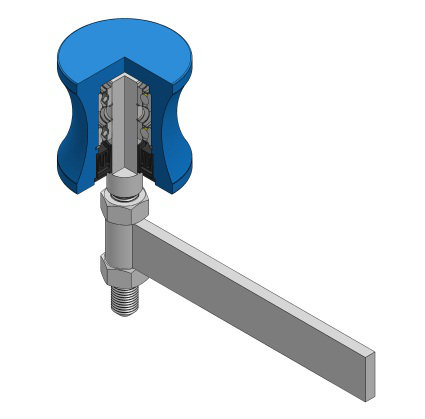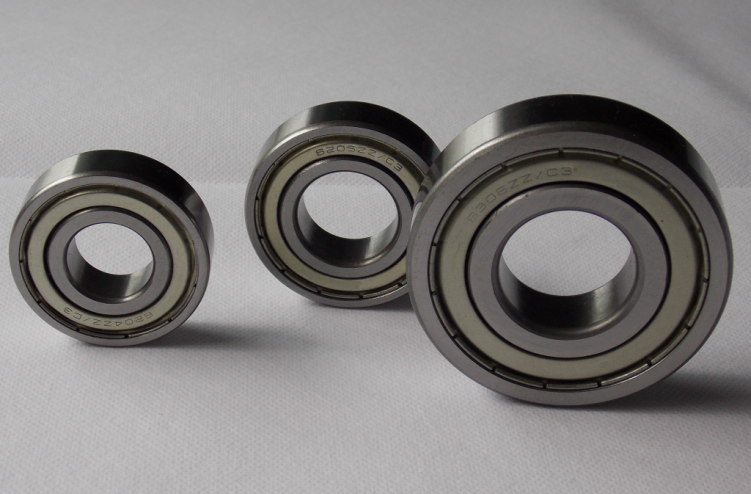Arsenic cobalt ore extract cobalt (extraction of cobalt from arsenic cobalt ore ) Cobalt Ore arsenic with cobalt and other elements separated products obtained by the process of drilling hydrometallurgical and pyrometallurgical method, arsenic and cobalt concentrate smelting by oxidizing roasting After the blasting, the blasting is carried out, and the leaching solution is purified to produce products such as cobalt, cobalt powder, cobalt salt and cobalt oxide. In the 1920s, the Deloro cobalt plant in Canada was first produced from arsenic and cobalt ore. Cobalt oxide. The arsenic-cobalt ore is mainly produced in Morocco, and it is easy to obtain high-grade concentrate by flotation. Arsenic concentrates usually contain 5% to 12% of cobalt and 15% to 60% of arsenic. Extraction of cobalt from arsenic-cobalt concentrates The full-fire process was widely used before the 1940s. Most modern processes use a combination of fire and wet processes. However, due to the need for environmental protection and safety protection, the full wet process is It has grown rapidly.
The whole fire process generally adopts a smelting-baking process, and the purpose is to enrich cobalt and nickel in arsenic cobalt lanthanum (commonly known as yellow slag), gangue and some iron and manganese slag. When the arsenic-cobalt concentrate has a high sulfur content, it is subjected to oxidative roasting to remove sulfur and a part of arsenic before the smelting, and the smelting can be carried out in an electric furnace, a reverberatory furnace or a blast furnace. The affinity of metal to oxygen increases in the order of copper , nickel, cobalt and iron. The affinity of arsenic to ammonium, cobalt, copper and iron decreases sequentially, while the affinity for sulfur is in the order of copper, nickel, diamond and iron. Decrement. During smelting, nickel and cobalt have a higher affinity for arsenic, preferentially combined with arsenic, and the remaining arsenic in the charge is combined with iron. When the arsenic-cobalt concentrate with low sulfur content is smelted, the amount of metal sulfide formed is small, and it is dissolved in the yellow slag, and the é” phase does not occur. When the sulfur content in the charge is high, the ruthenium phase separates separately, and the precious metal and cobalt are dispersed in the ruthenium and yellow slag, and the valuable components are separately recovered from the ruthenium and yellow slag, which complicates the next process. Yellow slag generally contains about 20% cobalt and 20% to 50% arsenic. The main components (mass fraction ω/%) of lanthanum are: Co 8-10, Cu10-12, .As 3-5, S20-23. The Canadian De Lono Cobalt Plant uses blast furnace smelting to treat arsenic and cobalt concentrates in Morocco and Canada. The smelting products of the blast furnace, slag and yellow silver alloy are divided into upper, middle and lower layers according to the density, and are easily separated after cooling.
The combination of the fire method and the wet method is generally characterized by the use of the wet method and the wet method. China used the reverberatory furnace smelting method to treat arsenic-cobalt concentrate imported from Morocco from 1960 to 1968. In 1969, it switched to electric furnace smelting. The arsenic-cobalt concentrate component (mass fraction ω/%) is: Co 9-14, As 50-60, Fe 5-10, S1-2. The electric furnace used is a three-phase circular fixed type with a power of 1500kVA, a daily processing of arsenic-cobalt concentrate of 20-27t, and a melting cycle of 4h. Charge ratio of arsenic cobaltite: anthracite powder: fluorite = 100: (2 to 3) :( 0 to 1), sometimes you need a small amount of additional limestone, into the furnace material pieces of less than 8mm. The arsenic removal rate of electric furnace smelting is 60%-65%, the yield of yellow slag is 40%~42%, the yield of cobalt is 98.5%~99%, and the electric energy consumption of ton ore is 650~720kw•h. The composition (mass fraction ω/%) of the yellow slag obtained by electric furnace smelting is: Co 24 to 26, As 45 to 50, and Fe 5 to 20. After being crushed, the yellow slag is autothermally oxidized and calcined in a fluidized furnace at a temperature of 1093 to 1113 K. The arsenic is oxidized to a volatile As2O3, and the metals such as nickel and cobalt are converted into an acid soluble oxide. The calcination is leached with dilute sulfuric acid. The leachate is neutralized by oxidation to remove iron and arsenic, and then precipitated to obtain cobalt hydroxide. The precipitate is reduced and smelted to obtain crude cobalt, and is cast into an anode plate for electrolytic refining to produce electrolytic cobalt. The total recovery of cobalt in the whole process reached 89.9%. The arsenic-cobalt concentrate is treated by fluidized roasting and is represented by the Ugine cobalt plant in France. The main oxidation reaction of arsenic in roasting is: Co5As2+4O2=5CoO+As2O3 calcine is treated by wet treatment to recover cobalt. In addition to producing electrolytic cobalt, the plant also produces cobalt oxide and hydrogen-reduced cobalt powder.
The wet process for the treatment of arsenic and cobalt ore by the wet process can be divided into acid leaching, alkali leaching and ammonia leaching. Under the condition of strong acid leaching, arsenic and heavy non-ferrous metals such as cobalt, nickel and copper all enter the solution; when leached with weak acid, arsenic precipitates as iron arsenate, and heavy non-ferrous metals such as copper, cobalt and nickel enter the solution. When alkali leaching, arsenic enters the solution with sodium arsenate, and heavy non-ferrous metals such as copper, nickel, and cobalt are present in the leaching residue. When the arsenic-cobalt concentrate contains a high alkaline gangue, the ammonia solution may be used for leaching. The wet treatment of arsenic-cobalt concentrate is widely used due to its low degree of environmental pollution and high cobalt recovery. The Nobel Bozel cobalt plant in France uses a leaching method of sulfuric acid plus nitric acid to treat arsenic-cobalt concentrates in Morocco. The leaching rate of cobalt is 88% to 92%. When the leachate is cooled, arsenic is in As. 0. The crystals are precipitated, filtered and washed with hot water of 368K temperature, and then cooled to produce pure As2O3 crystals. The leachate is subjected to oxidative neutralization to remove iron, and then cobalt hydroxide is precipitated. Cobalt hydroxide is then calcined to produce cobalt oxide powder. This method is suitable for the treatment of arsenic-cobalt concentrates containing less than 1.7% sulfur.
The Garfield Cobalt Plant in the United States treats arsenic-cobalt ore by pressurized sulfuric acid leaching. The leacher is a horizontal cooker, 12 m long, 1.8 m in diameter, with 6 compartments, each equipped with a stirrer. When leaching, the air is oxidized, the operating pressure is 3 to 4 MPa, the temperature is 463 to 478 K, the leaching period is 3 to 4 hours, and the leaching rate of cobalt is 95% to 97%. The initial product is a hydrogen reduction drill powder, and then the electrolytic method is used to produce metal cobalt. The Newburgh Cobalt Plant in the United States uses a pressurized alkaline leaching process to treat Canadian arsenic and cobalt concentrates. This leaching method is also known as Sill Method. The composition (mass fraction ω/%) of the treated arsenic cobalt concentrate was: Co 12, Ni 3.0, As 45, S20, Fe 19, Cu 1.0. The cooker is 8m long and 2.4m in diameter and is made of ordinary carbon steel. When leaching, the air is oxidized, the operating pressure is 0.82 MPa, the temperature is 388 K, and the leaching period is 4 h. The product is cobalt oxide powder, and the recovery rate of cobalt in the whole process is 94% to 95%. The wet treatment of arsenic-cobalt concentrate has a low environmental pollution and a high cobalt recovery rate, so it has been widely used.
Guide idlers are also called stub idlers, limiting idlers, track-guiding idlers. Guide idlers are are designed to prevent belts from tracking off. usually by contact with the edge of the belt. They can be used on both the trough and return side of the conveyor belt. The problem with many guide idlers is the design itself. A conveyor belt can quickly wear down the steel of the guide roll to make it unusable.

Guide rollers are also called stub rollers, limiting rollers, track-guiding rollers, snub rollers or lateral guide rollers. Guide Idler and Conveyor Belt Tracking Guide, was developed during the 1940's to assure reliable Belt Conveyor Tracking in the following industries: Guide idlers are properly mounted at the sides of the belt so that they keeping it aligned if there are run outs. Continuous belt rubbing against the guide idlers might cause damage (edge wear) of the belt. In that case further check of the conveyor items (pulleys, idlers, etc) and structure should take place. Guide idlers are available in various diameters and lengths.
Guide Idler usually use Ball Bearing.


Guide Idler
Guide Idler,Side Guide Idler,Guide Wheel Front Idler
Shandong Xinkaite Bearing Co., Ltd. , https://www.idlerbearing.nl